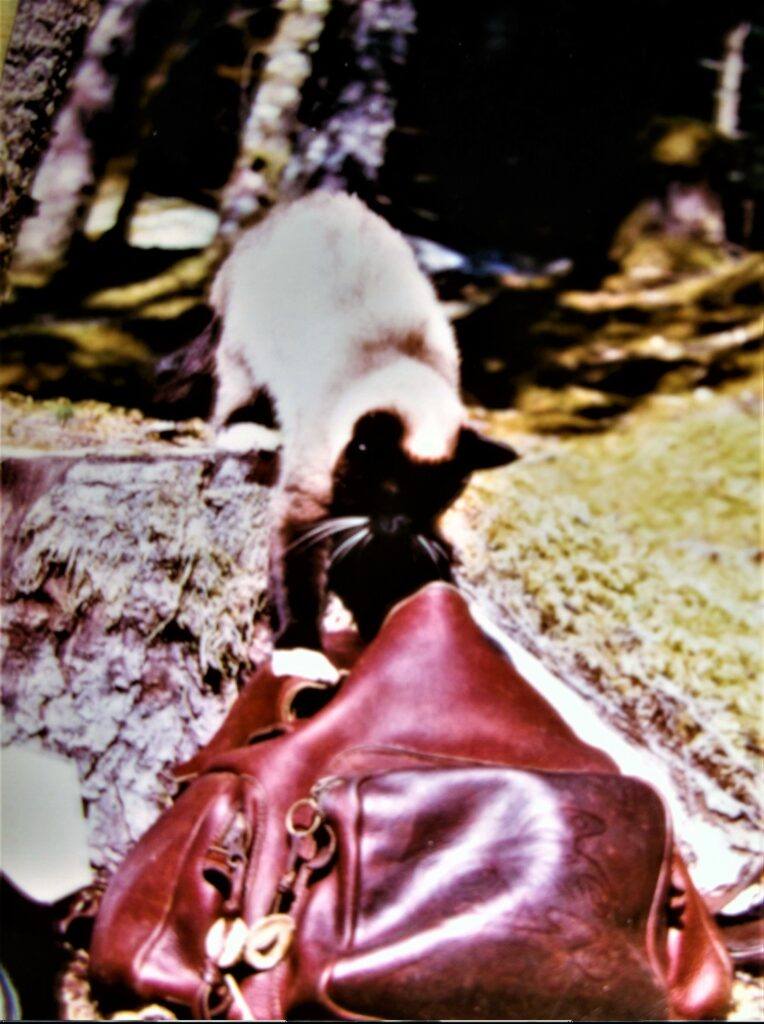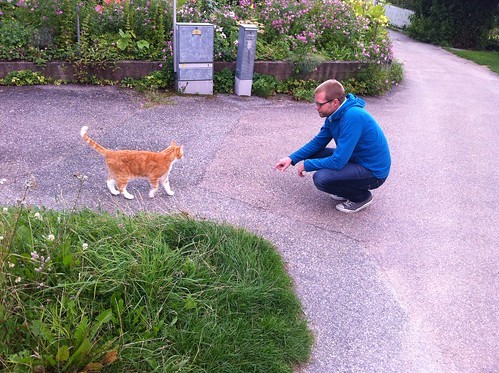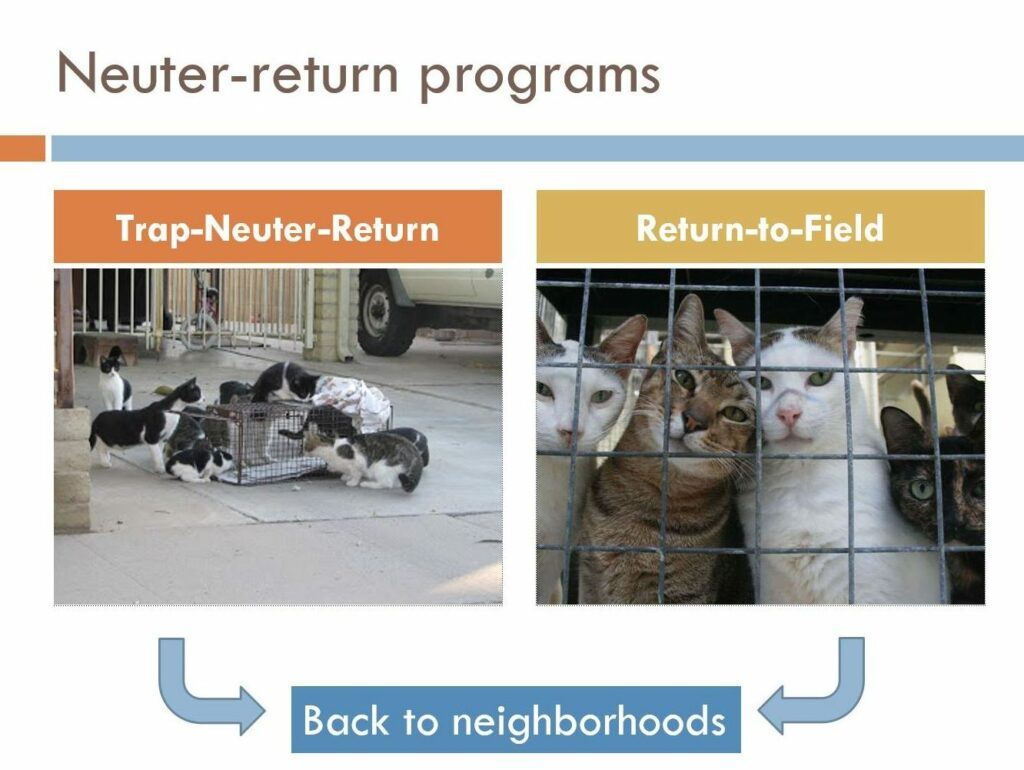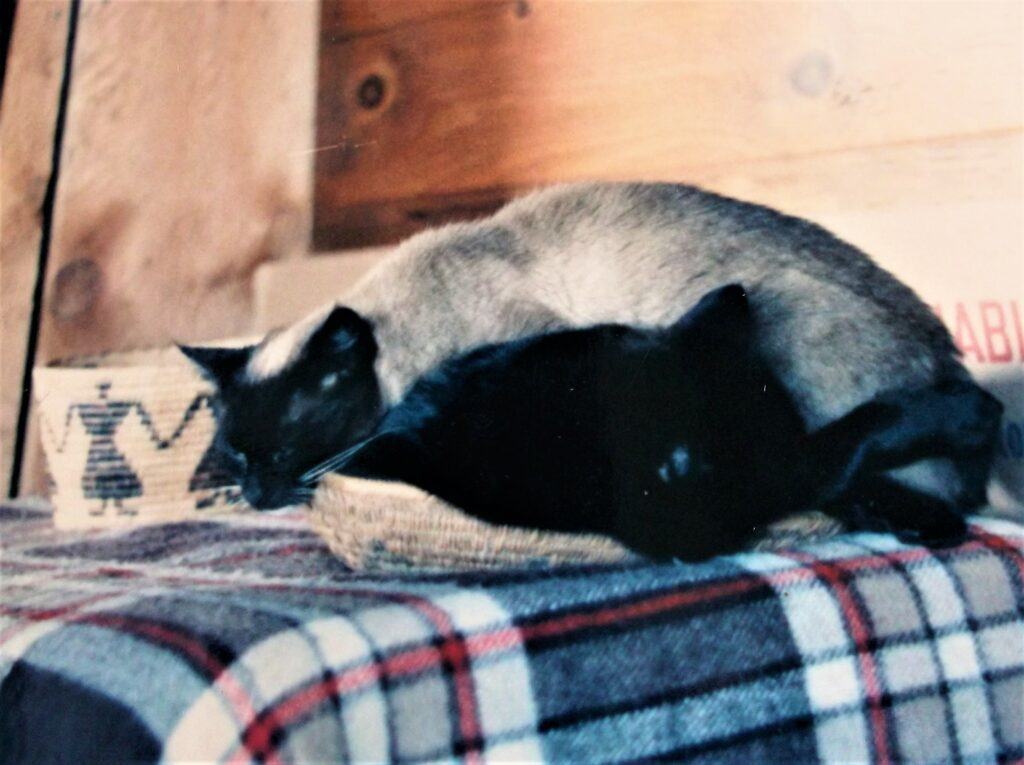Do you have feral cats in your neighborhood? Do you feed them? Have you met one feral cat in particular that you would like to tame and bring inside? Do you know how to tame a feral cat?
The good news is that you can domesticate a feral cat, but it will take a good supply of patience and love. If this cat has never spent time around humans, his fearfulness will make the process quite difficult. Are you up to the task?

A Feral Kitten Is Your Best Choice
First of all, you will have a better chance of taming and domesticating a feral cat if you select a young cat or a kitten. An older cat may hot have the capability to adjust after so long a time of living on its own. Improve your chances by choosing a youngster.
That being said, remember that a kitten should stay with its mother until it becomes old enough to have learned important skills from her. Make sure it is a minimum of four months old before taking it from its mother.
From then on, the socialization process for a kitten will proceed well, as you spend time with the new baby. Remember that when adopting a feral, you must plan to spend a lot of time with them at first, to help with socialization and adjustment.
My Feral Adoption Experience

When I lived on Spruce Island, I adopted two feral kittens. A construction foreman’s wife had been feeding the mother at their trailer, and the mother, having three kittens to raise, came willingly to get her meals every day.
When the summer finished, the couple left, and the mother now had to fend for herself and three little ones. One of the three had an all-black coat. The other two, almost twins, had Siamese seal-point markings, but with four white feet and a white chin. They must have been about six months old when I adopted them.
I’d been watching the little family off and on all summer, when I came in to teach or get mail. About two weeks after the couple left Ouzinkie, I went there armed with a cardboard box and cat food.
Sure enough, after two weeks, those kittens had built up an appetite. The mother cat and the black kitten had disappeared, but the two little Siamese still hung out at the same place.

I opened the can of cat food and set it in the open box; sat back and waited. Soon, the bravest of the two got in the box and started eating. The shy one didn’t want to miss out, so she climbed in the box, too. Once they both started eating, I closed the lid of the box and carried them a mile and a half to my cabin.
Sam Cat Takes Over The Training
At the time, I had my big black Sam Cat and a long-haired, husky-looking black and white dog named Teddy. Once the kittens got settled in, Sam took over raising them, as he had done with the dog. He soon had taught them all the house rules, and all went well.
I named them Poo an’ Lou, in honor of Uptight Cat and Loose Cat, who had gone by Poo and Lou most of the time. Though we created a strong relationship, they never quite overcame their feral ways. When I first came home from somewhere, they would run and hide until they became absolutely sure of my identity.

I had it easy, as I did not have to get the kittens used to me first. I lived too far away. They had to adjust and learn once I got them home. However, you might have a different situation.
Perhaps you have been feeding feral cats, and have found one in particular you’d like to take home. You must realize that the cat may have extreme hostility and fear toward humans and you will have to overcome those difficulties.
Test if the cat will make eye contact. If you can find out his age, that might help a great deal, as a younger cat might prove easier to tame. However, you may have to guess at age until you can get the cat to a vet.
When you approach the cat, make sure to wear long sleeves, thick gloves, and perhaps a protective mask.
First Step: Gain The Cat’s Trust
Food becomes an essential ingredient in your taming attempt. It’s the one really strong thing you have going for you. If the cat can get regular meals without effort from you, he will come to appreciate that aspect very much. It’s the best way to make a cat comfortable in your presence.
Feed the cat at the same time every day, so he comes to expect the meal as part of the all-important routine. Also, feed him in the same place each time. He will come to expect you to provide that food.

Move the food a little closer for you each day to get the cat used to your presence. Add a special treat now and then.
The First Touch
When you get close enough to touch, do so with caution. First, extend your fingers to the cat to sniff. To do so, either let kitty smeil one finger, or your hand, cupping it and letting him sniff. (Of course, you will need to remove a glove for this process.)
Once he becomes used to your smell, you can try to pet him gently. Remember after you have handled the cat, to wash your hands, as you do not know what the feral cat has been into, and you don’t need to contract any diseases.
You Must Visit The Vet
Once the cat begins to trust you, then comes the hardest part. You have to get him into a cage and take him to your vet for a thorough checkup.

You might contact your local humane society to see if they have a trap that will close automatically once the cat goes inside. The all-important food can lure the cat into the carrier.
Do not skip this step. It’s of crucial importance that you know that you and your children receive no danger from adopting this cat. Have his general health checked and get him vaccinated and spayed or neutered.
Time To Bring Him Home
When you bring the cat home, establish him in a safe place.
For starters, put him in a room by himself. Make sure the cat has plenty of space to move around. You will need to supply a litter box, food, water, and perhaps toys. Keep the light dim. Bring in an article of your clothing from the laundry and a blanket with the scent of any other pets in the house.

Make sure kitty has a hiding place. Of course, do not leave windows or doors open at first until the cat adjust to its new home.
Spend A Lot Of Time With Him
Start by just letting him get used to your presence. Create a routine around your visits, so you interact at certain times each day. Bring in a book to read if necessary, so you can sit with him for a long time. Talk to kitty often in a soft voice.
Pet Your Cat
Once the cat becomes fully comfortable around you, go through the extended hand process, until kitty comes close and sniffs it. Let the cat make contact first; then you can try to pet him gently and carefully.
You Can Do It!
You and your once-feral cat can learn to co-exist happily and can bond to each other with a strong tie. You must have patience and remain calm, but you will receive your reward, once your kitty accepts you and his place in your home.
My two once-feral kitties, though always shy around strangers until they got acquainted, gave me so much pleasure.

I do believe the domesticating process was much easier because Sam Cat took over. He established rules. The cat, dog, and I often took long walks in the woods. If Poo an’ Lou tried to follow, Sam chased them home. Finally, when they reached about a year old, he’d let them come along.
Also, he would not let them go down to the beach by themselves until they were full-grown. After all, they didn’t know about dark creatures in the sky who could swoop down and scoop up an unsuspecting kitten.
My little family brought me great companionship and fun adventures. We were the lucky ones. We had our safe haven in the woods where we could live joyfully together.
References I used for this post: fveap.org/tame-a-feral-cat thesprucepets.com/taming-a-feral-cat-4802624 animalwised.com/tips-to-tame-a-feral-cat-933.html lovingourhome.com/domesticate-feral-cat/

